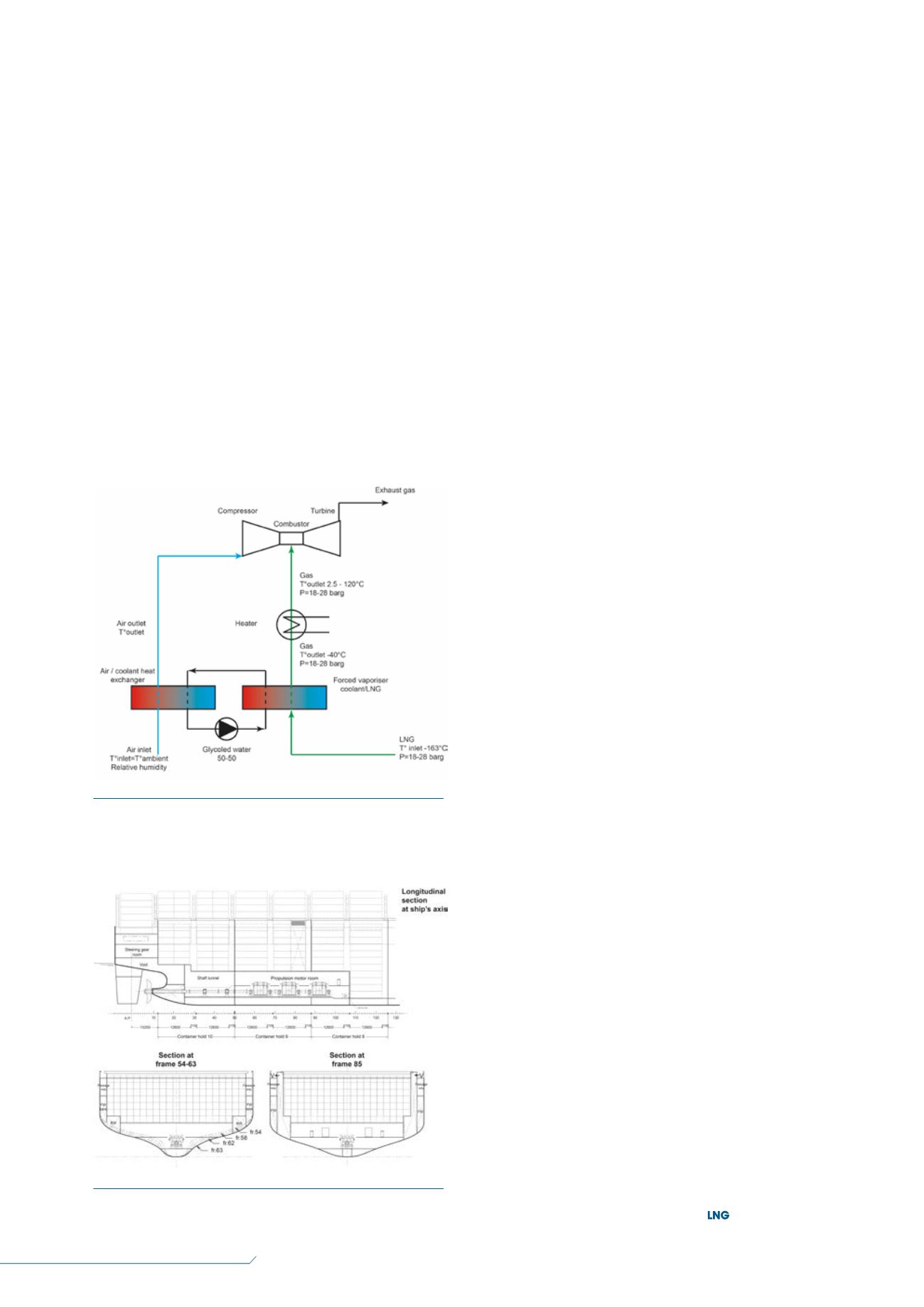
74
LNG
INDUSTRY
JULY
2016
The general layout of the propulsion room is illustrated in
Figure 5.
Ship’s cost and incomes
Incomes
Essentially, the income generated by a container vessel is
proportional to the quantity of containers being carried and applied
freight rates. The number of containers being carried by a vessel on
a given journey depends on both the ship’s geometric capacity and
the remaining payload available.
The first step of this study shows that geometric capacity is
enhanced (+377/HFOdesign and +860/dual-fuel), while the
payload slightly increases (due to the fact that the COGAS
propulsion system is lighter than a two-stroke diesel engine).
This extra capacity is a competitive asset, especially with high
freight rate.
CAPEX
A preliminary cost-benefit assessment has beenmade to compare
the COGAS vessel to HFO and dual-fuel designs.
Within this analysis, the additional costs mainly related to LNG
tanks, the LNG handling system, gas and steam turbines, and
electric propulsion (e-motors, drives, converters, etc.).
Furthermore, the following systems do not exist on the
COGAS design, so further savings can bemade:
Scrubbers and NO
X
reducers.
Main engine (replaced by electric propulsionmotors).
HFO tanks and heating system.
HFO treatment system.
Sludge handling and storage system.
At this stage of the study, the cost of the COGAS vessel is
evaluated to be approximately 20%above the price of an HFO
design (fitted with scrubbers) and 13%above the dual-fuel design.
OPEX
For any ship, operational costs mainly consist of the following:
Crew costs.
Repair andmaintenance costs.
Fuel and lubrication oil (and all other consumables) costs.
Ship’s store.
Administrative and insurance costs.
The second phase of the study will specifically evaluate all of
the operational costs for a specific operational profile defined by
the ship owner.
Conclusion
The implementation of tighter ship emission control is a new
challenge for the shipping industry.
Essentially, the following three options are available:
Keeping HFO as fuel, but adding scrubber systems.
Shifting to themarine gas oil or a low sulfur fuel.
Shifting to natural gas.
For the ship owners, the choice between these options will be
determined by the following criteria:
The technical feasibility of implementing a solution on an
existing or newbuild vessel.
The capacity for ship owners and shipyards to find suitable
equipment and fuel.
The cost-effectiveness given by the net present value.
Technically, LNG offers a promising solution, as it is a clean fuel
and is already used by hundreds of LNG carriers around the world.
At the time of writing, however, LNG bunkering services were
limited to just a couple of harbours. Nonetheless, several bunkering
projects are underway to support the increasing demand for LNG
as fuel.
Above all, the deployment of LNG as fuel on a large scale
within the shipping industry is conditioned by cost-effectiveness.
For ship owners, shifting fromHFOor MGO to LNG is a great
challenge and risk, which cannot be accepted purely for
environmental reasons. LNG as fuel must be cost-effective
compared to classic fuel oil.
To achieve this aim, new ship concepts need to be designed
and evaluated without prejudice. This is what Marine
Assistance has been doing in this COGAS feasibility study
led by GTT, CMA CGM and DNV GL.
Figure 5.
Extract of the propulsion room plan
(
©
Marine Assistance/ABB).
Figure 4.
Principle diagram of the LNG vaporisation and air
combustion cooling (
©
Ariamis).


